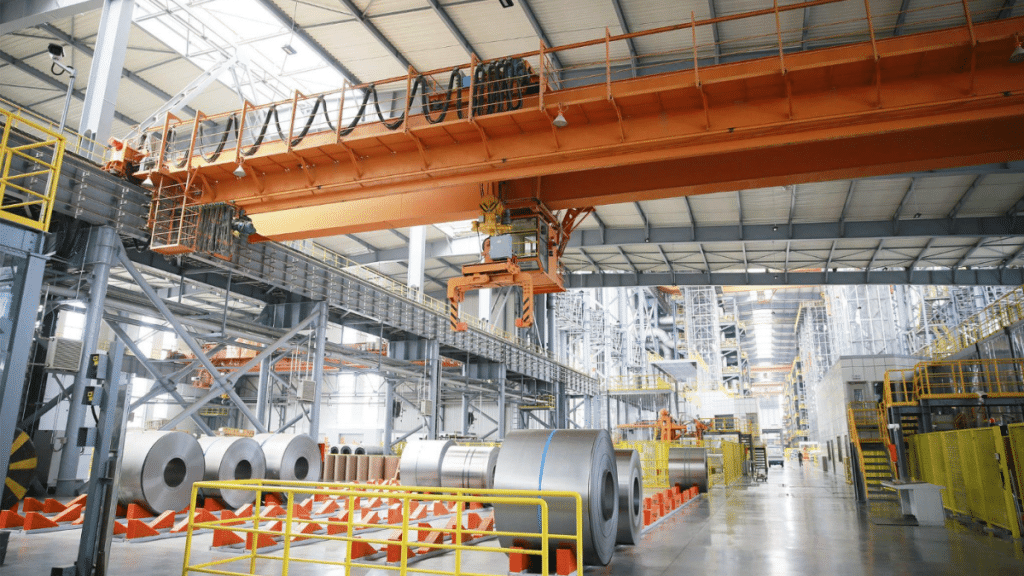The world of industrial cranes is constantly evolving, with safety being a top priority for manufacturers and operators alike. In recent years, intelligent safety protection systems have become a game-changer in this field, offering advanced technology to mitigate the risks associated with crane operations. These systems enhance not only the performance of cranes but also their safety features, reducing the likelihood of accidents in high-risk environments like manufacturing plants, shipyards, and metallurgy production facilities.
Why Intelligent Safety Systems Matter in Crane Operations
Cranes are essential in industries where heavy loads need to be lifted and transported safely and efficiently. However, they are also complex machines prone to malfunctions and human error, which can lead to accidents. Integrating intelligent safety systems into cranes has become a necessity rather than a luxury.
Intelligent safety systems work by automating critical safety functions, allowing operators to focus on their tasks while the crane automatically ensures that all safety protocols are followed. This is particularly crucial in environments where cranes handle heavy or hazardous materials, such as in metallurgy or construction. For instance, overhead cranes equipped with real-time load monitoring and automatic overload protection can prevent many common crane failures, which often result from overloading or miscalculating load limits.
A great example of a crane that utilizes these intelligent safety features is the FEM Standard overhead crane. Designed for industrial applications, it is built with advanced safety systems that continuously monitor load weights, ensuring that the crane is never overworked. These innovations not only help prevent accidents but also prolong the lifespan of the equipment.
Key Components of Intelligent Crane Safety Systems
Real-Time Load Monitoring: This feature continuously measures the weight of the load being lifted, allowing operators to ensure they do not exceed the crane’s capacity. The system provides instant feedback, reducing the chances of overloading, which is one of the primary causes of crane accidents.
Automatic Overload Protection: If the crane’s load exceeds the safe limit, automatic overload protection systems stop the lift immediately. This function is vital in preventing mechanical failure and potential accidents that could occur due to overloading.
Anti-Sway Technology: When a crane lifts a load, swaying can cause instability, increasing the risk of accidents. Anti-sway technology uses sensors to detect load movement and adjust the crane’s actions to minimize sway, ensuring a smoother and safer lift.
Proximity Sensors: These sensors detect objects or workers in the crane’s operating range, automatically stopping the crane to avoid collisions. This is especially important in busy work environments where multiple cranes or workers are operating in close proximity.
Emergency Stop Systems: Intelligent cranes are equipped with emergency stop systems that can be triggered either automatically or manually. These systems bring the crane to an immediate halt in the event of a malfunction or unexpected hazard.
Predictive Maintenance: A newer feature found in intelligent cranes is predictive maintenance. This system uses sensors and software to monitor the crane’s condition, predicting when maintenance is required before a failure occurs. This reduces downtime and ensures that the crane remains in optimal working condition.
Reducing Risk with Intelligent Systems
In industries like metallurgy, where cranes such as double girder overhead cranes and foundry overhead cranes are used to transport hot, molten materials, safety is paramount. An accident involving these materials could lead to severe injuries or even fatalities. With intelligent safety systems, these cranes can automatically regulate their performance to avoid dangerous conditions.
For example, foundry overhead cranes and double girder overhead cranes for metallurgy are equipped with temperature monitoring sensors and emergency shutdown systems. These features are designed specifically to enhance operational safety in environments where even a small error can have catastrophic consequences. Explore more about double girder overhead cranes and foundry overhead cranes for metallurgy.
The Economic Benefits of Intelligent Crane Safety Systems
Aside from the obvious safety benefits, intelligent crane safety systems also offer significant economic advantages. By reducing the likelihood of accidents, companies can avoid costly downtime, equipment repairs, and legal liabilities. The automation of safety functions means that fewer human errors occur, leading to more consistent and reliable crane operations.
Moreover, the inclusion of predictive maintenance features helps to prolong the life of the equipment. Regular maintenance and timely repairs ensure that cranes remain operational for longer, reducing the need for replacements and minimizing operational disruptions. Over time, the cost savings from fewer repairs, extended equipment life, and minimized downtime can be substantial.
The Future of Crane Safety
As industries continue to adopt smarter technologies, the future of crane safety will likely see even more sophisticated systems in place. One promising development is the integration of artificial intelligence (AI) and machine learning into crane safety systems. These technologies could allow cranes to learn from their operations, improving their safety and efficiency over time.
Additionally, virtual and augmented reality (VR and AR) are being explored as tools for crane operator training and safety simulations. By training operators in a virtual environment, companies can provide hands-on experience without the risk of real-world accidents. This could prove particularly useful for training operators to handle emergency situations, allowing them to practice responses to different scenarios in a safe and controlled environment.
Conclusion
The integration of intelligent safety protection systems into cranes marks a significant step forward in industrial safety and efficiency. Cranes like the European-style overhead crane and double girder overhead cranes for metallurgy are prime examples of how technology can enhance operational safety in demanding environments. By automating critical safety functions, these intelligent systems reduce the risk of accidents, protect workers, and prolong the life of the equipment.
As technology continues to advance, the role of intelligent systems in crane safety will only grow, offering more robust solutions to the challenges faced by industries worldwide. For companies looking to enhance both safety and efficiency, investing in cranes with advanced safety systems is not just a smart choice—it’s a necessary one.
